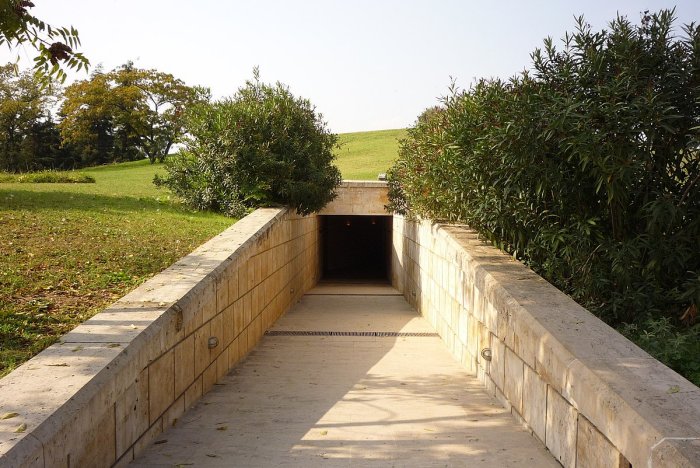Jan Bartek – AncientPages.com – The mystery surrounding the location of Alexander the Great’s tomb continues, but scientists have made significant progress by identifying his family’s burials at Vergina in northern Greece. They confirmed that the human skeletons found in the untouched 4th-century B.C. Royal Tomb belong to Alexander’s family.
In 1977, the renowned Greek archaeologist Manolis Andronikos made a groundbreaking discovery at Great Tumulus Hill in Vergina, Greece: four ancient tombs. He proposed that these tombs were the final resting places of Philip II, father of Alexander the Great, and Alexander IV of Macedon, Alexander’s son. While this claim sparked extensive scholarly debate over its validity for years, subsequent excavations have provided persuasive evidence supporting Andronikos’ theory. Thankfully, two of these tombs remained untouched since antiquity, granting researchers an unaltered glimpse into their contents and offering invaluable insights into their historical importance. This evidence suggests these tombs belong to the royal lineage.
In a recent study published in The Journal of Field Archaeology, researchers explain that they uncovered a piece of clothing that might be Alexander’s sacred purple tunic, along with several artifacts believed to be his possessions. An international team of archaeologists and osteologists detailed how these textiles were dyed with Tyrian purple—a color reserved for royalty—and contained rare minerals from Persia. This discovery has led archaeologists to reconsider their understanding of the burial arrangement since such garments would have signified Alexander’s status and been passed down to his heir.
The cotton tunic offers valuable insights into its origins, as it was made using huntite—a mineral giving a brilliant white sheen—both native to Persia rather than Greece. This suggests a strong connection between these regions and indicates that the garment was likely created after Alexander’s conquest of Persia.
Entrance to the Royal Tombs, Vergina. Credit: Colin W. – CC BY-SA 3.0
A frieze in Tomb II illustrates a figure, probably Alexander the Great, engaged in a hunt while wearing a purple sarapis adorned with two white stripes. This depiction, alongside other artifacts such as a golden oak wreath discovered in Tomb II, corresponds with historical records.
A section of the frieze from Tomb II depicts Alexander the Great adorned with a sarapis, which corresponds to one that was discovered within the tomb. Credit: Antonis Bartsiokas
Researchers propose that this fabric and other personal items found in the tomb may have belonged to Alexander himself and were inherited by Philip III following Alexander’s death in 323 B.C.E. This finding has ignited discussions about who might be interred in the tomb while broadening historians’ understanding of ancient textile use and royal burial practices. Consequently, researchers are revisiting Vergina’s Tomb II to reassess its historical significance based on these new insights.
Textile fragments uncovered in the tomb are believed to be remnants of the tunic worn by Alexander the Great. Credit: Theodore G. Antikas et al.
Alexander the Great, the renowned king of Macedonia in the 4th century B.C.E., embarked on extraordinary military campaigns that spanned Europe and Asia. His sudden death in Babylon in 323 B.C.E. left a legacy shrouded in mystery, prompting scholars to tirelessly seek his elusive tomb and any artifacts linked to this legendary figure.
See also: More Archaeology News
The recent findings at the royal tombs in Vergina could finally illuminate this enigmatic chapter of history, offering invaluable insights into Alexander’s life and legacy. These discoveries can potentially transform our understanding of one of history’s most fascinating leaders.
The study was published in the Journal of Archaeological Science.
Written by Jan Bartek – AncientPages.com Staff Writer





